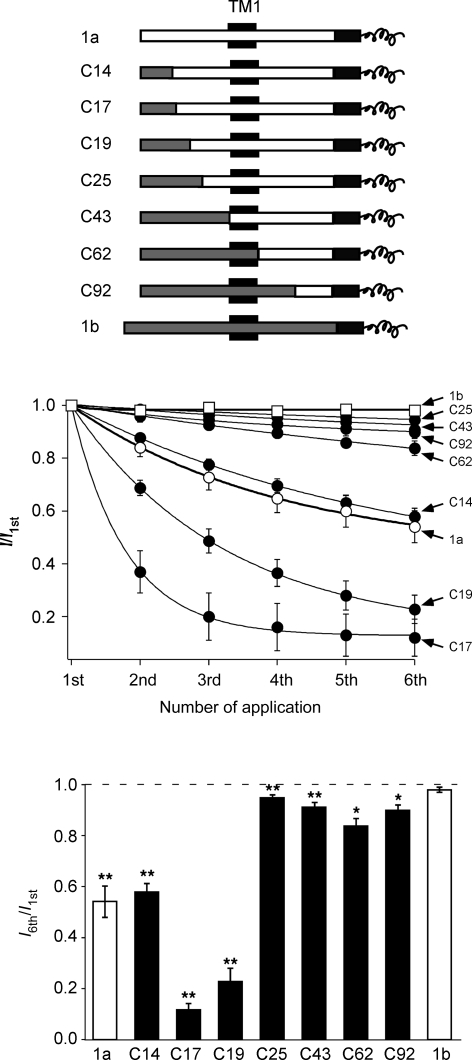Figure 10.
Tachyphylaxis is related to permeability for divalent cations Top, chimeric channels are schematically drawn. NH2 terminal sequences from ASIC1a are shown as open bars, those from ASIC1b as grey bars. The first transmembrane domain is indicated as a black box and the common C-terminus is shown as a black bar; only its first part is shown. The number denotes the number of exchanged amino acids; for example, in chimera C22 the NH2 terminal 22 amino acids of ASIC1a had been exchanged by the corresponding amino acids of ASIC1b. The chimeras did have a shorter NH2 terminus than ASIC1b; this shorter NH2 terminus corresponds to M3 in Bässler et al. (2001). Chimeras have already been reported in Bässler et al. (2001) and Babini et al. (2002). Middle, current amplitudes were normalized to the first amplitude. Continuous lines represent fits to a single exponential function. Activation was with pH 5. n = 6–14. Bottom, ratio of the sixth current amplitude to the first amplitude. The sixth amplitude was always significantly smaller than the first, except for ASIC1b. *P < 0.01, **P < 0.001 by paired t test.

